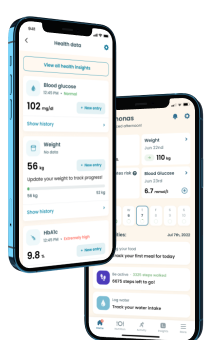A Guide on the Importance of Eating at Regular Intervals

Weight management is one of the major concerns among people in modern times. Many diseases and vulnerabilities are linked to excess weight, and many health experts have searched for ways to ensure people lose extra pounds.
With many studies on the best ways to manage weight, several landmark methods have been proven to work over time. One of these methods is maintaining regular eating intervals.
Regular eating interval is simply a weight management plan that comprises maintaining consistent mealtime such that the first and last meals of the day allow enough time for the body to use the majority of consumed calories as fuel before bedtime. Maintaining regular time has been proven to help lose weight and encourage a healthy lifestyle. However, for these gains to happen, there are other factors one must consider.
In this piece, you’ll find out about the best appropriate meal timing for weight management, if it’s recommended to skip breakfast and if the decision to eat at regular intervals as a weight loss plan is worth it.
The Science Behind Interval Meal Times
The practice of eating intervals has been around for a very long time, with the method extremely common among athletes and top figures. The definition of this weight management method comprises scheduled times that people are expected to take meals. This time is consistently followed and helps track how much food a person is eating and when they also stop eating for the day.
Many people have adopted the plan in modern times due to its success level when done right. So how does the meal times method work? This section will provide a detailed answer.
According to health experts, the human body and mechanism learn things and can get used to a pattern. This is usually seen in the form of the undeniable need to go to sleep at night and wake up in the morning.
We usually maintain this schedule until a change in sleep pattern is triggered, which disrupts the body system. This disruption explains why a person who usually works a day job feels the after-effects of changing to a night shift.
Possible consequences and reactions could range from extreme tiredness to dullness and serious illness. However, an adaptation would occur with time, and the new change will begin to feel normal.
Just like the body adapts to sleep, so does it adapt to regular eating meal times. The most popular mealtime is the three meals a day pattern that most people widely adopt. There are other patterns, depending on a person’s weight goal.
The three main goals for keeping to a regular mealtime is to:
- eat enough for sustenance,
- eat to meet up daily nutrition goals,
- ensure weight management, and
- control the effect of an underlying condition.
The first option concerns regular eating habits and defines how much people will eat to satisfy their hunger. By doing so, some people may end up skipping meals when they don’t have the luxury to eat at a particular time and won’t put much effort into it because there’s no consequence.
The second option is a more targeted and dedicated attempt to keep to certain meal and meal times to meet daily nutritional requirements. People may want to meet their nutritional requirements for a day to keep their health at the optimal level.
The third option is the major reason people adopt mealtimes — to achieve some desired weight. Some people maintain a time interval that allows them to eat two, three, or six times a day. The major aim is to ensure that they’re not eating too many calories and their last meal gives them the luxury of three hours before they go to bed.
The fourth option is for people with serious conditions like diabetes. Diabetes is one of the serious underlying conditions whose symptoms and possible complications effective meal choice and time control can effectively mitigate. Diabetes symptoms include a rise in blood glucose levels and could lead to serious complications like kidney and cardiovascular disease.
Following a strict regular mealtime coupled with a serious reduction in high-sugary meals and snacks can help people with diabetes control the risk of complications accompanying their condition.
The Three and Six Times Food Interval
Successfully maintaining a regular eating interval actually depends on your eating patterns. The 3 times a day meal method is the most popular and highly recognized among national traditional eating patterns.
While there are several patterns to adopt, certain populations prefer to eat their food based on certain factors like costs and work schedules. The three times a day meal plan is globally recognized and accepted by both experts and the global population.
The three times a day plan comprises breakfast, lunch, and dinner and is considered the standard for healthy eating. All three meals are expected to be almost equal, though breakfast and dinner might be slightly lighter as they’re eaten in the morning and just before sleep, respectively.
Lunch is usually recommended to be the heaviest of the three regular meals as that’s when the body needs peak energy levels to function appropriately.
Health experts recommend the three daily meals pattern because it provides enough non-eating breaks to burn out extra calories consumed. This particular pattern enhances the chances of keeping and maintaining the desired weight.
However, in reality, the three-meal plan won’t always help prevent weight loss as the type of food that people eat in that window is important. With the three meal plan, one can achieve weight management if calories lost are equal to that consumed. A significant drop in weight will occur if there’s a consistent drop in calories expended compared to intake.
While one can achieve this weight loss phenomenon with the three-day meal plan, many people find it difficult to maintain a good interval between meals and usually end up with extra calories than their ideal daily intake. For example, most people eat dinner and go to bed in less than 3 hours — 3 hours is the recommended stay-awake time for the body to effectively use a significant amount of calories as energy.
With the real challenge that the three-meal course plan presents, it’s quite difficult for people with a poor regular eating interval time to achieve effective weight management.
Some health experts suggested a new plan that’s believed to handle this condition following the subjective challenge of the three-day meal. However, this new plan didn’t gain popularity until health expert, Jorge Cruise, introduced it in his new book, The 3-Hour Diet. This book introduces the six-course daily meal plans.
According to Jorge Cruise, the six meal plans mean that a person should eat as much as 6 times daily, contrary to the three meal plan. He stated that eating 6 small frequent meals will help control weight better than eating three heavy meals.
Cruise claimed that eating that much forces a person’s body to remain in a working state, keep metabolic rate high, and utilize more calories. The plan is rooted in the belief that eating more often—but a much lesser meal plate—has a higher effect on calorie burning compared to eating heavily and less often.
The 6-day meal plan followed strict regular eating interval rules, and breaking them could lead to serious negative weight management. The mealtime plan was as follows:
- First meal: One hour after rising from the bed
- Second meal: Three hours after the first meal
- Third meal: Three hours after the second meal
- Fourth meal: Three hours after the third meal
- Fifth meal: Three hours after the fourth
- Sixth meal: Three hours before going to bed
Cruise claimed that following this plan strictly increases the body’s basal metabolic rate (BMR), increases energy levels, and decreases appetite for high-sugar snacks that the three-day meal plan could leave room for.
Cruise suggested a 6-hour meal plan has been consistently tested over the years by nutritionists and health experts of underlying conditions to check if it does aid weight management as stated. The findings, however, highlighted certain difficulties that came with maximizing this plan.
Firstly, many nutritionists agreed with the need for people to maintain regular intervals as that helps the body get used to the time that food comes in. However, nutritionists cited certain difficulties in following Cruise’s plan.
The first difficulty cited was the ability of people to actually follow through with the pan for the long term. The plan was criticized as extremely stringent, making it difficult to achieve its purpose as an alternative to the three-day meal plan.
A good example is the difficulty of supposedly eating at regular intervals 6 times daily. This method is most likely achievable if a person eats the last meal at 8 pm. Staying awake for an additional 3 hours before going to bed implies one would need to sleep by 11 pm — a time most people would be asleep.
With the last meal booked for 8 pm, the respective meal plans in ascending order would be 5 pm, 2 pm, 11 am, 8 am, and 5 am. Obviously, waking up very early at 5 am to eat the first meal of the day wouldn’t work for many people.
Shifting the morning meal to 6 am means that the last meal would fall to 9 pm. In this case, the sleep time automatically becomes 12 pm, which many people will find difficult to follow still.



Apart from the difficulty of following the 6 meal plan course, the school of thought stating it leads to a higher metabolic rate and better calorie burnout hasn’t been fully accepted. Surprisingly, experts believe that the 6-day meal plan doesn’t burn more calories per day. The result from the 6-day meal plan is equal to that of the 3-day meal as weight management is only achieved when calories intake is either equal to or less than calorie burning.
So, instead of focusing on the method of eating, the concern should be on food choices. Also, many experts believe that the 6-day meal plan requires more work. If not properly watched, it’s more likely to add more weight gain and increase the consequences of underlying conditions.
Summarily, the 6-day meal plan isn’t more beneficial than the 3-day meal plan for those that want to maintain regular eating intervals and manage weight.
The Role of Intermittent Fasting
This is a type of regular eating interval time. However, it has a direct role and can be effectively followed compared to the 6-day meal plan.
This section will consider this form of fasting, how it helps people commit to a regular eating interval, and why it could be adopted by people who seek to lose weight without skipping meals.
What is Intermittent Fasting?
This form of fasting is the way or pattern a person eats, which involves regular minimal food consumption and periods of no food intake. It’s also referred to as short-term fast.
This can help people lose weight over time as they indulge in a short period fast, leading to the intake of fewer calories. Nevertheless, intermittent fasting can also help reduce blood sugar and cholesterol levels, thereby lowering the risk factors of diseases like cardiovascular disease and diabetes.
Types of Intermittent Fasting
There are different methods of intermittent fasting, with the following being some of the most commonly used types:
- 5/2 diet
- Warrior diet
- 16/8 method
- Eat stop eat
5/2 Diet
This is a simple type of intermittent fasting diet plan. In this plan, you normally eat for five days a week without restricting your calorie intake. Conversely, you consume only 1/4 of your daily calorie intake in the remaining two days of the week.
People who usually consume about 3,000 calories daily would consume only about 750 calories over two days, weekly. This restriction of your calories intake for two days isn’t easy to follow and isn’t ideal for everyone. It’s best to see your doctor to know if this diet plan will be good for you.
Warrior Diet
Ancient warriors adopted this diet pattern, which Ori Hofmekler developed in 2001. In this diet plan, you eat a small quantity of food during the day for 20 hours and eat as much as you want at night for a four-hour window period.
On the one hand, the warrior diet plan encourages people to eat little hard-boiled eggs, dairy products, vegetables, fruits, and drinks that don’t contain calories for 20 hours. On the other hand, people are encouraged to eat more organic, healthy, and unprocessed foods during the four-hour window.
No research has proven that a warrior diet can help weight loss. However, several studies demonstrate that time-restricted feeding plans can slow down tumor growth, increase lifespan, delay aging, and prevent diabetes in rodents.
16/8 Method
This is a popular intermittent fasting diet used effectively for weight loss. In this diet plan, people consume food and beverages containing calories eight hours daily and fast for 16 hours every day.
The 16/8 diet plan is considered flexible, using the time-restricted feeding pattern. In this plan, you can choose the eight hours suitable to consume the calories.
In some cases, the person could skip breakfast or avoid eating late. However, restricting your food intake to a few hours daily can help reduce your blood pressure and lose weight.
One of the best 8 hour times for eating is the 11 am to 7 pm schedule. This window allows a person to start eating by 11 am, again at 3 pm, and finally at 7 pm. With this, a person can sleep by 10 pm, allowing for enough time (3 hours) for the body to use consumed calories.
Eat Stop Eat
This intermittent fasting approach was made popular by the Book “Eat Stop Eat” written by Brad Pilon. In this diet plan, you’ll find a suitable day or two where you’d fast for 24 hours, and you’re allowed to eat freely in the remaining days of the week. However, people on this diet plan are advised to avoid overconsumption and eat a properly-rounded diet.
Abstaining from food for 24 hours can cause your body to use fat as an energy source instead of glucose, resulting in a metabolic change. Hence, your doctor is best positioned to determine if this diet plan will suit your weight loss journey.
Is Intermittent Fasting an Effective Meal Time-Regulating Method?
Intermittent fasting is a trusted mealtime planning method that requires only a moderate level of discipline to obtain a satisfactory result. However, it’s important to note that Intermittent fasting doesn’t just focus on ensuring proper distancing of food break periods. It also encourages eating smaller meals with small calories for effective weight loss.
Apart from helping with weight management, it also helps reduce the symptoms of underlying conditions accompanying high fat and sugar intake. The ability of this plan to ensure caloric restriction makes it a standout option that most people can go for.
Is Regular Eating Time Interval Also Good for Gaining Weight?
The six-day meal plan would be more effective than any intermittent fasting option for anyone who wants to add weight healthily. All the person needs to do is ensure that they eat more calories with every food intake. However, it’s also important for people who desire weight gain to consider the type of food they eat as healthy eating is a priority.
They should go for whole grains and meals rich in all the nutrients medical practitioners know. They should also include good foods like fresh fruit and some calorie-filled vegetables.
Finally, they need to get a clinical nutrition plan from a health expert for the best benefit as the risk of blood pressure spikes is high when gaining weight.
The Importance of Breakfast

A very important debate associated with regular eating time intervals is if skipping breakfast helps reduce weight. Studies on this claim have shown that it’s not advisable to skip breakfast.
Skipped breakfast leaves people with a higher reliance on snack food later in the day. Conversely, starting your day with a good healthy meal—especially one filled with fiber—will leave you more satisfied with less urge to eat junk food outside.
From a 2017 study published in Circular— an American Heart Association (AHA) journal—74% of people who end up not eating breakfast in the morning (versus 41% who do) fall at risk of not meeting up to two-thirds of their daily nutrition requirement for both minerals and vitamins. This leaves them exposed to high diabetes and cardiovascular risk due to an unhealthy higher dependency on sugary foods.
Also, another study shows a high correlation between eating at irregular times and skipping breakfast. This means that people are much more likely to keep poor eating habits when they continuously don’t eat breakfast in the morning.
The decision usually makes them less time conscious with their eating time, triggering an increased urge to consume more food accumulated over the day. People who miss breakfast have a higher chance of eventually becoming overweight.
From the above studies, it’s clear that eating breakfast is vital to keeping a consistent regular mealtime, increasing the possibility of effectively managing weight and controlling other underlying conditions.
Final Words
Eating at regular intervals is vital for weight management and preventing possible complications in underlying conditions like diabetes. Once the body gets used to a standard mealtime interval, it stores fewer calories, subsequently implying less chance of weight gain.
This article extensively considers the importance of maintaining regular meal time while also touching on other related issues. Clearly, for people to reap the full benefits of eating on time, they need to ensure they aren’t consuming food that causes aberrant weight gain.
For people with diabetes, food with a high glycemic index will always affect blood sugar temporarily and in the long run, so it’s critical to consider food choices just as much as sticking with a regular time interval. This way, the full benefits of adopting the latter will become evident.
Apparently, with meal choices significantly affecting the success of implementing great regular mealtimes, you should contact your nutritionist or get a meal planning app that helps you determine the best healthy meals that work for weight management. If you have diabetes, then a digital diabetes meal planner will work better.
Our Klinio app is one of the top meal planning apps you can go for due to its amazing benefits in managing diabetes and related conditions. Notably, this virtual caregiver introduces you to lifestyle and diet options that are great for your health and reduce your dependency on drugs.
Take a quiz and get your diabetes-management plan today!








